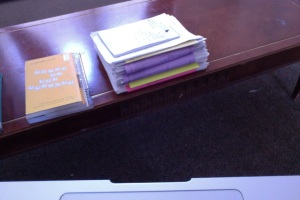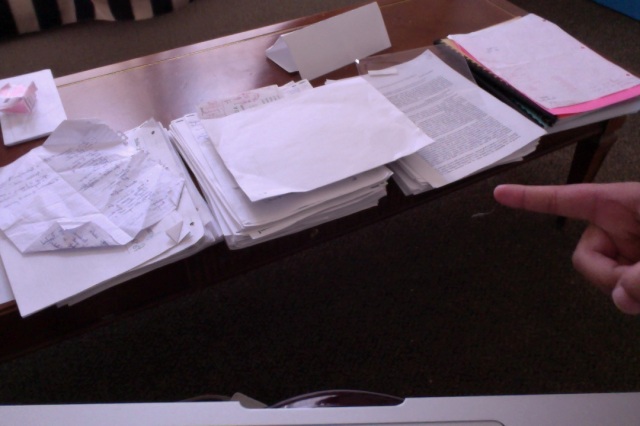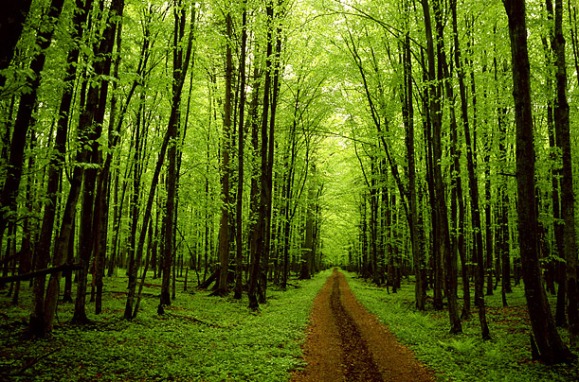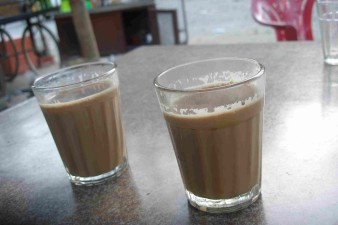Atmosphere of how this blog post began – the jpt part: So what do you do when you have an international flight tomorrow and you are torn among important matters like getting the last bit of sun, the last drop of holiday, packing or preparing for your exams that awaits you at the other end of the flight. Plus not to mention the butterfly in the stomach that starts fluttering just when it is pre -travel time. Aba since one lives in Kathmandu at the moment, electricity, as you know is scarce. When you finally get it for a brief time after that long long wait, it is overwhelming. You do not know what to do. Generally,the indecision about what is the most important task to be accomplished with the internet and batty is so great that by the time you are trying to decide while scrolling Facebook, it is time out. Well, today I am facing the same indecision but with all the travel things that I mentioned above. Of the 5 hours of electricity for today between noon and 5 pm, I have not accomplished much by now at 2:49 pm. So what I have decided to do is, beat the butterfly by chill-axing: writing about the butterfly, while listening to some soothing music ( and I let youtube decide what is soothing music: and I have listened to Jodha akbar and now listening to Dil Se- for those who do not know, that song reminds me of violence, the end of the movie the song is from, even though the song is shot with people dancing on train tops; ok now another song is being played and it is getting really annoying; ok the next one is aishwarya and bibek overroy (?) and nice music coming … ok its nice)
If tomorrow is an international flight, I ought to be packing. Hence, packing ought to be what I write about at least. [Wai wai break and the Aishwarya bibke over-roy(?) song still playing on youtube] In my many back and forths between AAA and Ktm, I have created so many travel files: to pack, to take, to bring, to do grand travel lists… I have had to create a separate travel folder when I was cleaning my computer this winter.
The post’s useful content starts here:
Here I write about the preparation for international flights/journeys. And when I say prep/pack it is not about what to pack in your suitcase. For those who travel regularly this blog may not say anything new. This writing is mainly for myself.Every time I travel I start with a list of “To dos” and “To take” as I mentioned above. And I feel it is going around in circles and I am beginning to suspect each time I ponder to make the list, I come up with the same list with a different format. I think it will be easier, and save time if I have it documented, in one place – my blog, particularly because I hardly blog these days. Further, I can build on this post and make better lists if I decide to make some more. FYI: When I say “you”, I mean “me”.
What specifically is inside here and why? I have three things here: first, I discuss the system of packing I am thinking of and, then I move on to the heart of the matter in the two main things: a) a template of “To Dos”, and b)“What is where”. The first – discussion of systematic packing – is about explaining the context, to remind myself why I have this crazy post. The second part – the templates is like a guide to myself to make my later pre-travel days less stressful.
I think the most useful for me later would be the Tasks and Time template. I have divided these into three and mainly based on time. These three times are: things to do way before the actual date of traveling; a day or two or even a week before traveling; and the day of traveling. The day of traveling, the last part, is further divided into morning and just before leaving the house.
As for the “what is where”, is to make a manageable places to keep. With this sorted out I hope I do not have to make any more “Grand Travel List”!
I. Packing
Basically when packing we only think of the suitcase but it is the last minute other stuffs that tends to be the problem at times. It is also the most stressful since it is last minute. Mostly I used to make a “morning to do” such as “don’t forget the comb and tooth brush” list every time I travel. But now I think it is best to just have a set template of the last minute. Template system for packing list is sth I accidentally learnt while packing my important documents. This basically involves keeping track of time and place, changes and does not change; checking a day before and just on the day. So let me try creating a template and as an instance I have a description of how I managed my important travel documents.
A. Make a permanent list of what is always required and never changes
1. Sth to check a day or two before travel
2. To check at the last minute
B. List of always changing in every travel just before travel (a day or two in advance)
C. A permanent labeled folder or place
1. for these check list
2. Where you actually keep these things when you travel
So my templates of lists will be based on timing and just packing in general will be based on places, what to put where. I will have places as folders and it can have sub places.
Here I will discuss three places:
- Puntey Bag
- Bagpack
- Self (Pant pocket)
The Bagpack has 4 more sub-places:
- Travel Folder (TF)
- Personal Hygiene Bag (PHB)
- Electronics
- Clothes (a small plastic bag)
In this file I have color coded each of these places as follows: This is because any item on my to do list in the template will be written in these colors by which I can associate those things/tasks with places.
Red: Puntey Bag
Yellow: Travel Folder
Purple/Pink: Personal Hygiene Bag (PHB)
Blue: Electronics
Orange: Clothes extra
Green: Self
Blue folder: Bagpack
My Inspiration Example System: Travel Docs
For Travel Documents I did the following:
Never changing:
i. Figured out the most important travel documents that I need for traveling every time
Ii. Made a permanent “travel” plastic folder – this is an accordion folder
Iii. Labelled the folder, both inside and outside so that I recognized it when I came across it – saved duplication of task (otherwise there are many docs I put in plastic folders and even though there may be a system, I forget it since I do not use them every day. As a result, I have go through all the plastic folders not knowing what is where. This of course is a waste of time, because a lot of duplication of tasks take place plus regarding travel documents it causes anxiety.)
How the system works : I just put my respective most important travel documents in the folder. When ever I travel I just take the folder, put it in my bag pack. Simple. I am always assured I have the right documents.
However, some documents needs constant updating unlike the system itself. It is explained below:
Changing (Needs Updating):
Some documents need to be changed because they may have expiry date. So it is best to keep checking and updating these documents at other free times. Not waiting to do this just before travel time saves a lot of anxiety, stress and time. [So let me label it as “ To do at other times, maybe rt after travel”? Or in free time.] Eg: include passport expiration, checking visa dates.
Always Changing: [Eg: plane tickets]
An example is plane and bus ticket that will always change. So that section needs to be updated every time I travel. So I have it placed on my “Things to Do just before travel”.
And let me move on to the different folders I mentioned above. What do I hold in each of them
1. Puntey Bag
2. Bagpack
2.1 Travel Folder
2.2 Personal Hygiene Bag
2.3 Electronics
2.4 Clothes Extra
3. Self
3.1 Pant Pocket
1. Puntey Passport Bag: The puntey bag is the bag that you will need to carry around your neck all the time during your travel. It will hold essential stuffs for travel that you want with you no matter what. Fishing these stuffs in bag pack is a hassle especially since you need to present it instantly. Items include:
- Passport
- Ticket/boarding pass
- Money
- Medicine [I.e. If you need certain medication]
- Pen [yes you need ‘em! To fill those forms before landing]
- Chasma case
- Sim [need to switch sims]
- Mobile charging wire (whatever its proper name) [planes have those plugs to charge]
- Ear plugs [sometimes the ones they give in the airplane don’t work, and air hostesses sometimes need to be asked again and again and again — trust me, happened to me once]
Apart from these other items can include:
- Hand sanitizer
- An emergency supply for sanitary napkin
- Tissue/hanker chief
- Mobile extra charger
- If flying to a new place for the first time then list of contact number and address – in a small piece of paper not an entire book
Another advantage of this is when going through the security, and you need to take out all those tiny things from your pant pocket, or whatever you are wearing, you can stuff them in this easily and then retrieve it soon enough.Some example include:
- Mobile
- Watch
- Coins
- Metal hair clip
The above lists are repeated in the templates.
2. Bag pack: This includes three sub packs.
2.1 Travel Folder [TF]
Already given as the example that inspired this whole system.
2.2 Personal Hygiene Bag (PHB)
- Personal Hygiene bag includes stuffs like:
- Tooth brush [even though long distance airplane has it]
- Comb
- Hair stuffs: clutch, rubber bands big, rubber bands small
- Tissue paper
2.3 Electronics
Electronics needs to be charged before leaving. Items include
- Computer + charger
- Ipad + charger
- Kindle + charger or Book
2.4 Clothes – Extra Pair
Why take clothes? Sometimes the luggage may not be delivered on time and it helps to have an extra pair of clothes. Trust me, I have had it! This is especially when you are traveling to somewhere new. And you do not want to be moving around in the same old same old pair of clothes for even days, this may include sth like:
- T shirt
- Under garments
- socks
3. Self
The self can include many things. For me it is the pant pocket. This can include certain things like:
- Phone
- Money
- Sanitary napkin
- hankerchief
II. Templates: Tasks and Time
There are three templates.
Template A: To do way before travel, mainly in free time
Template B: To do a day or two before travel
Template C: To do on the last day
Template C1: Morning
Template C2: Just Before leaving the house
Template A: To do way before travel, mainly in free time
The to do is mainly about updating and I think it is best to do in free time. It has mainly to do with documents in the travel folder.
Items include:
- Visa
- Passport expiry
Template B: To do a day or two before travel
Below are places that needs to be checked before travel. I do it a day or two in advance or even on the day itself. But for some people it might work even a week in advance or just anytime you think you are preparing for travel and want to prepare early.
Template C: To do on the last day
The to do on the day of travel is divided into two:
1. The morning
2. Before leaving house for airport
C 1. Morning: These are things that we will keep using until the morning of the day of the flight. Some items include:
- Check in and print the air ticket
- Tooth brush and paste; shampoo, soap
- … CHARGE EVERYTHING! [Computer, iPad, phone]
- Call the taxi with a time
C. 2 Just before leaving the house: These include things that we are using all the time and can’t pack it days in advance. It is best not to pack them even the day before because you will have to unpack to use them anyways and to try to keep these in mind every time you use them to not to forget them while traveling is a formula for bursting your brains.
These items include in order:
- Comb [I always forget this]
- Fitbit
- Phone
- Once more: ticket, money, passport, chasma
Conclusion
Basically the principle to avoid pre travel stress is to try to pretend everything is in control. To do so is especially easy when you have a standard checklist like the one I made. Of course we can add and subtract things but at least the list makes one assured that one has not left out any important thing. Further, because the templates are divided by place, time and tasks, it makes preparing more manageable.
And with that I finish both my blog post, and the last day of this time’s trip in Kathmandu before my flight tomorrow. I have not started packing yet but at least I have the list ready by now.
Good luck to me!


 Photo source: http://www.e-diyetisyen.com/genel/tup-bebek-tedavisinde-beslenme/
Photo source: http://www.e-diyetisyen.com/genel/tup-bebek-tedavisinde-beslenme/

 When one of my friends first told me that I ought to bring “tea” when I come here, that seemed odd. The fact that among the list of important things like my “transcript”, she also cared to mention tea seemed awkward. But now after staying here a semester I know that I would be an absolute must. Tea there, when I was there, I took it for granted. Visit any person and she/he offers you tea. “Chiya ta khayera janus”, “hoina hatar cha”, even then you still get to sit for the next 15 minutes finishing that cup of tea, doing some guff with your host, you intended to visit only for 5 min, just to get that photocopy or a book.
When one of my friends first told me that I ought to bring “tea” when I come here, that seemed odd. The fact that among the list of important things like my “transcript”, she also cared to mention tea seemed awkward. But now after staying here a semester I know that I would be an absolute must. Tea there, when I was there, I took it for granted. Visit any person and she/he offers you tea. “Chiya ta khayera janus”, “hoina hatar cha”, even then you still get to sit for the next 15 minutes finishing that cup of tea, doing some guff with your host, you intended to visit only for 5 min, just to get that photocopy or a book.